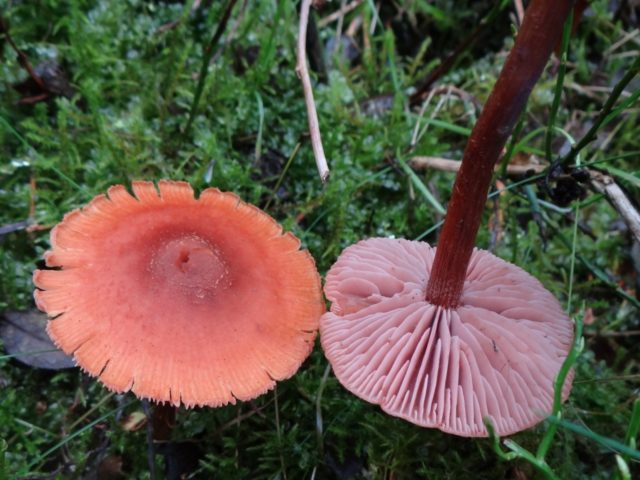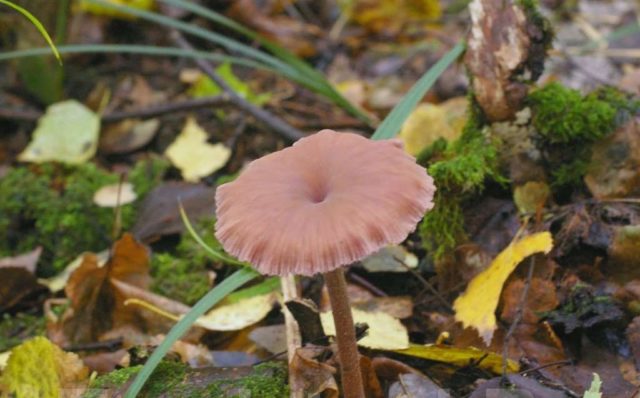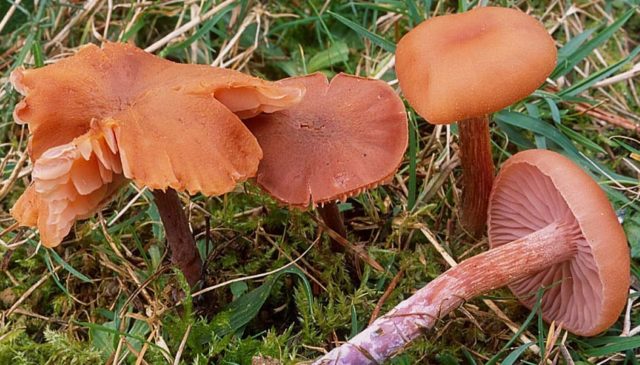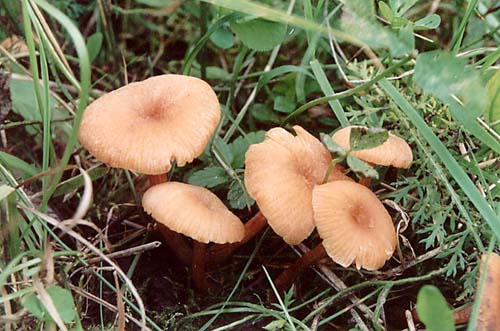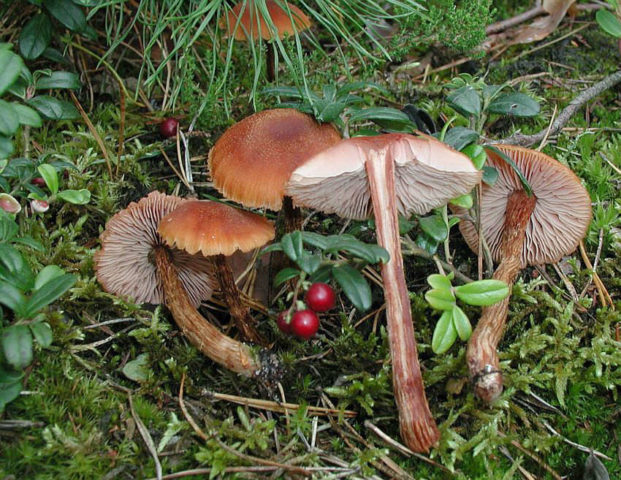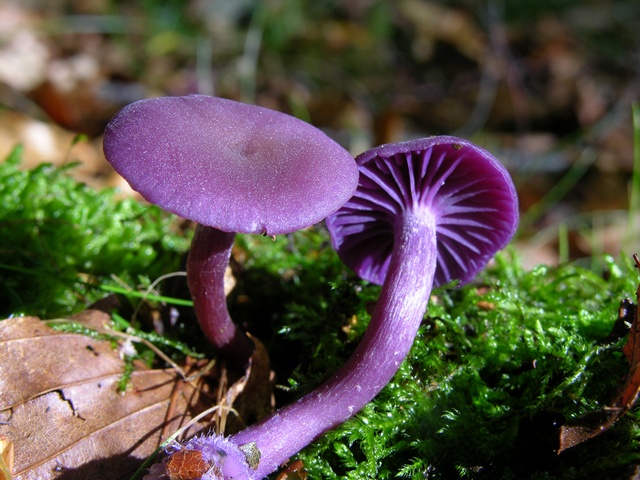Content
The type of mushrooms Lakovica two-color belongs to the genus Lakovitsa, the Gidnangievye family. It is a conditionally edible fruiting body with low palatability, which makes it not a very popular object for picking.
What two-color varnishes look like
As the name implies, two-color varnish differs from other representatives of this genus in the color of the cap and plates. The central part of the upper surface has a heterogeneous color - from dark pink to orange-brown. At the edges, the shade is usually lighter. The rarely located plates on the underside are dark purple. They shine through the surface at the edges, giving them a ribbed appearance.
Depending on the growing conditions, the cap can have a different shape and color. At first it looks compact with slightly curled edges. Then, as it grows, the edge line straightens out, and the fine-flaked surface takes on a complex convex shape, depressed in the middle. The diameter can reach 2-7 cm.
In conditions of high humidity, the cap may acquire an irregular shape. The pulp is thin, with a faint radish odor and lack of taste.
The leg is long, thin, curved. It is slightly widened at the base. The surface is rough with small vertical scales. The color is uneven, brownish pink. In the context, the pulp is fibrous-wadded.
The height of the leg is 4-8 cm, the thickness is 0.3-0.7 cm. There may be a slight edge at the base.
Where two-color varnishes grow
Mushrooms of this genus are widespread throughout Eurasia and North Africa. They prefer forests of coniferous and mixed types, most often found under pine, fir, cedar, spruce. They practically do not grow under deciduous trees.
The fruiting period includes the entire summer-autumn season.
Is it possible to eat two-color varnishes
The type of bicolor varnish is conditionally edible. It can be eaten only after a certain heat treatment - frying, boiling, steaming. In no case should it be consumed raw.
Taste qualities of the mushroom two-color varnish
The nutritional value of this kind of mushrooms is low. In addition, a number of studies have revealed the presence of an increased level of arsenic in the representatives of this species.
False doubles
The following types of mushrooms are very similar to two-color varnish:
Pink lacquer (ordinary). It can be distinguished by a smooth cap, the surface of which has no scales. The color can range from pink to carrot red.
Large varnish. This double differs from the two-tone varnish in the absence of a lilac shade on the plates. The base of the leg also has no edge.
Lilac varnish (amethyst). Old faded representatives of this double are very similar to two-colored varnish. However, the cap of these mushrooms is small in size - from 1 to 5 cm. The stem and plates are painted in a bright purple color.
Collection rules
The main rule of mushroom pickers is "I'm not sure, don't take it!" In order not to risk your health, you should adhere to other basic recommendations when collecting two-color varnish:
Mushrooms that are in doubt are best left in the forest.
They cannot be tasted raw.
In order not to confuse two-color varnish with twins, it is necessary to carefully consider the shape, surface of the cap and the color of the plates.
Mature mushrooms can contain toxic substances that can lead to poisoning. Therefore, preference should be given to young specimens.
Pre-prepared solid containers will help preserve the integrity of the mushrooms during harvest.
The leg must be cut off at the base. This will protect the mycelium from damage and allow it to bear fruit next year.
Before going into the forest, you should first familiarize yourself with the main distinguishing features of representatives of this genus.
These recommendations will protect the life and health of mushroom pickers and help make the right choice during the collection.
Use
To completely or partially remove poisons, bitterness and unpleasant odors, mushrooms are heat treated at high temperatures. But such measures reduce nutritional quality and taste worse. Therefore, mushrooms of this type are recommended not to be boiled, but immediately fried in their natural, raw form.
After collecting the two-color varnish must be prepared as quickly as possible. Areas damaged and damaged by insects should be cut off. For better cleansing of sand and forest debris, the entire harvested crop must be thoroughly rinsed. Can be soaked for 20-30 minutes.
Conclusion
Two-color lacquer is a conditionally edible mushroom that grows mainly in coniferous forests and is distinguished by a rich brown-pink color of the plates. But due to their low nutritional and taste value, representatives of this genus are not popular among mushroom pickers.

